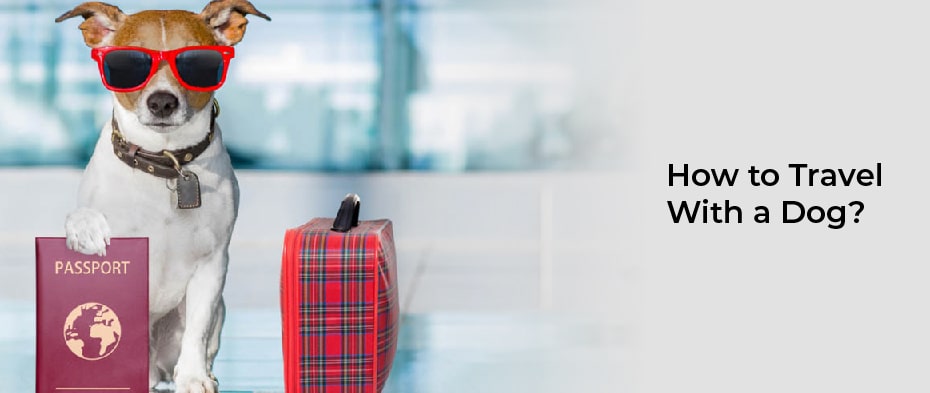Table of Contents
How to travel with a dog? There are a few things to consider when traveling with a dog. The first is whether the dog is comfortable in a car. If the dog is not used to being in a car, it may be helpful to take short rides before taking a longer trip. This will help the dog get used to the motion and minimize stress.
The next thing to consider is what type of travel crate or carrier is best for the dog. A good option is one that attaches to the car seat belt so that it remains secure during travel. It’s also important to make sure that the carrier is large enough for the dog to move around in, but not too large or it will become a safety hazard.
Before hitting the road, make sure to pack plenty of food and water for the trip, as well as bowls for each.
Health And Safety
When traveling with a dog, it’s important to consider their health and safety. Here are a few tips to help keep your pup safe while on the road:
- Make sure your dog is up-to-date on their vaccinations and has a clean bill of health from their veterinarian.
- If your dog is not used to being in a car, take them on short trips around town before hitting the open road. This will help them get comfortable with being in the car and lessen the chances of them getting carsick.
- Bring plenty of food and water for your dog, as well as bowls for each. You may also want to bring along some treats to keep them happy and engaged during the trip.
Crates
When traveling with a dog, one of the most important things to bring is a crate. A crate can provide your pet with a sense of security and keep them safe while you’re on the road. Here are some tips for using a crate when traveling:
- Choose the right size crate for your dog. The crate should be large enough for them to stand up and turn around in, but not so large that they can use it as a bathroom.
- Make sure your dog is comfortable in their crate. Some dogs may need time to get used to the idea of spending time in a crate, while others will love it. You can help make your dog feel more comfortable by putting some favorite toys or blankets inside the crate.
- Use positive reinforcement to help your dog feel comfortable in their crate.
Traveling By Car
- If you’re planning on taking a road trip with your furry friend, there are a few things you need to do beforehand to make sure everyone stays safe and comfortable.
- The most important thing is to make sure your pet is properly restrained in the car. You can use a harness or a crate, depending on your dog’s size and personality.
- It’s also important to take regular breaks so your dog can get out and stretch his legs.
- Make sure you have plenty of water and food for your pet, as well as any necessary medications.
- Plan your route ahead of time and make sure there are plenty of places for your dog to stop and relieve himself along the way.
- Be prepared for the occasional accident or mishap – always keep some supplies handy just in case!
- And finally, have fun!
Flying
Traveling by air with your pet can be stressful but it doesn’t have to be. Here are some tips to help make your trip a little easier:
-Make sure your pet is comfortable flying. Some animals handle flying better than others so do some research beforehand. Talk to your veterinarian if you have any worries.
-Get your pet a health certificate from the veterinarian no more than 10 days before departure. The certificate must state that your pet is healthy and fit to fly.
-Bring along plenty of food and water for the flight, as well as a bowl and a leash. You may also want to bring a kennel or carrier for your pet to travel in.
-Check with the airline regarding their policies on pets.
Traveling by Train, Bus Or Boat
When traveling with a dog, it’s important to be prepared. Here are some tips for taking your furry friend with you on trains, buses and boats:
– Check with the transportation company ahead of time to see if pets are allowed on board. Some companies have restrictions on the type or size of pet that can travel.
– Make sure your pet is comfortable in a carrier or crate and that they have been trained to use it.
– Bring plenty of food, water and bedding for your pet.
– If your pet is prone to motion sickness, bring medication to help them cope.
– Always have your pet’s vaccination records and ID tags on hand in case they need to be checked by a veterinarian.

